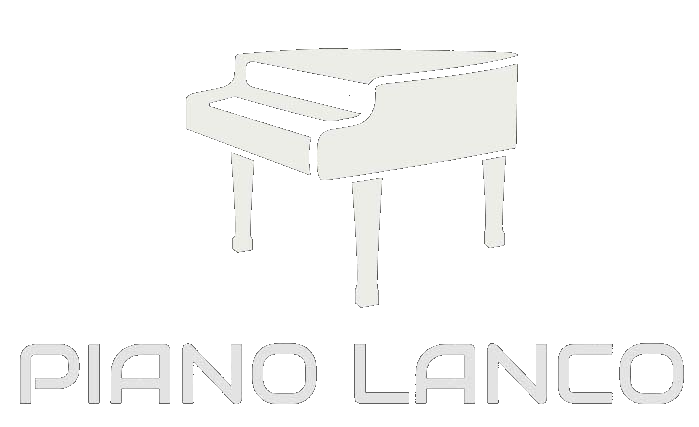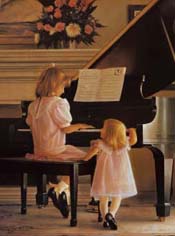
Marc Lanthier
Piano Tuner / Technician
514-770-7438
info@pianolanco.com
I tune, repair and upgrade upright and grand acoustic pianos. 30 years + experience.
I service the greater Montreal area including the West Island, Laval, North and South Shores and Eastern Ontario. Appointments can be made by email info@pianolanco.com, phone or text 514-770-7438.

Services
Tuning Services
- Standard Tuning
for a regularly maintained piano - Standard Tuning with Pitch Raise
for a piano that hasn't been tuned in a long time - Gift certificates available
Regulation Services
- Adjust let-off, hammer strike, keydip, drop, backchecks, aftertouch, touchweight...
- Shape / Voice / Replace Hammers
- Tighten Screws, Lubricate, Adjust pedals, Replace Action Felts...
Cleaning Services
- Action: hammers, dampers, components....
- Soundboard
- Keybed
- Pedals and inside assembly (uprights)
- Keys (ivory polishing or repair / replacement / ebony cleaning)
Repair Services
- Action / Hammers / Pedals / Strings / Hardware
- Ivory Repair / Keytop Replacement
- Case / Soundbaord Repair / Refinishing
- Casters
- Humidity Control Systems
- Benches / Accessories
Recommended Tuning Frequency...
- Private Home: annually - around the same time each year
- Advanced Pianists: 2-3 times each year
- Larger Rooms, Concert Halls, Churches: 1-2 times per year (or before a performance)
Info on pianos
Piano Sizes...
Grand Pianos
Measured from the very front of the keyboard to the tail end of the piano.- 4' 5" to 5' 0" (Small Grand)
- 5' 0" to 5' 5" (Baby Grand)
- 5' 6" to 5' 9" (Medium Grand)
- 5' 10" (Living Room Grand)
- 6' 0" (Professional Grand)
- 6' 4" (Drawing Room Grand)
- 6' 8" (Parlor Grand)
- 7' 4" (Semi Concert Grand)
- 8' 11"+ (Concert Grand)
Upright Pianos
Measured from the floor to the top of the piano.- 36" to 40" (Spinet)
- 40" to 43" (Console)
- 44" to 48" (Studio)
- 49" and higher (Full Size)
* Pianos range in weight from about 300 lbs for a small spinet to more than 1000 lbs for a concert grand.
Piano tuning and maintenance...
Pianos that are tuned regularly experience less stress during the tuning process. This results in a more stable and longer lasting tuning.
The key to a stable tuning is to (1) equalize the tension between the 4+ segments of a piano string, (2) properly set the tuning pin and (3) maintain a controlled environment.
Usually a standard tuning is required. However pianos that are not tuned regularly often require more work, ie. additional tuning(s) in order to reach acceptable stability - this is commonly known as a pitch raise.
If a piano has not been tuned in many years, expect that it will likely require a pitch raise.
Ideally...
- Do not place pianos in direct sunlight, tuming instability and sun bleaching may occur.
- Do not place in front of or next to a heating / cooling source.
- Place an upright piano at approx. 10 cm from the wall.
- No plants on the piano.
- Place cups underneath all metal casters to protect your floor.
- Adjust bench height so the pianist's forearms are slightly higher than the keys.
Myths...
- IT IS OK to place the piano on an outside wall.
- IT IS OK to put a piano in a basement.
- IT IS OK to let young children "play". They can't break it!
- DO NOT use milk or vinegar to clean ivories / keytops (use a slightly damp cloth - no chemicals).
- Waxing / stripping / painting the piano will not make it sound better.
- Pianos that are not played still require periodic maintenance.
New pianos are not always better. Many are great instruments, however many are also known as a PSO (Piano Shaped Object). Older pianos are still great choices and are available at a much lower cost.
Often, partial or complete restoration of a good old piano is much more economical than buying a new, low-quality instrument. Once restored, it probably will have much better tone than the average new piano.
Before the tuning...
- Remove all objects placed on the piano.
- Make some room around the piano as some case parts will have to be removed.
- Identify any problematic notes.
- Avoid loud background noises during the tuning.
New pianos...
New pianos require a different tuning schedule. The settling of the wood structures such as the soundboard, bridges, pinblock etc. may cause the pitch to drop between tunings. Most manufacturers recommend 2-4 tunings during the first two years of ownership.
Why upgrade from digital...
- Tone: You simply cannot beat the presence of an acoustic piano. Yes, the new digital pianos have sampled sounds obtained from top acoustic pianos, but their tonal qualities are lacking the soul of the traditional instrument.
- The appearance, prestige and tradition.
- Longer keys of acoustic pianos provide that balanced touch and control.
- All acoustic pianos can be refined to improve the touch as well as the tone and are often adjusted to the pianist's requirements.
Facts about pianos...
Pianos are delicate instruments that require periodic professional attention...
Although there are only 88 keys, a piano has over 200 strings - one per note in the low bass, two per note in the upper bass, and three per note in the tenor / treble.
Tension averages approximately 160 lbs. per string. All together, the strings are stretched to a tension of 18 to 20 tons (close to 30 tons in a concert grand).
The strings gradually increase in thickness and length from treble to bass, and bass strings are wrapped with copper (older pianos may have steel wrapped bass strings) to produce a lower frequency by increasing the mass of the string.
There are often 5000 or more parts in a piano.
Humidity Control...
The room where your piano sits should be humidity-controlled.
Pianos that are subject to large humidity variations will usually go out of tune much more rapidly. Especially true in southern Quebec with our high humidity summers and very cold and dry winters.
Humidity control can be achieved by installing a Dampp Chaser system or by stabilizing the piano's environment; ideally around 20°C and 45% humidity.
Once under control, an annual tuning / verification is recommended.
Installation and maintenace of Dampp Chaser systems
Teachers
- MELANIE LANTHIER Piano Lessons (514-771-7438)
- CÉLINE RIOUX Piano Lessons (450-218-2501)
- CLAUDE GUILBERT Piano School (438-393-2987)
- SOPRANO Piano School and Studio (450-458-5191)
- EMMY-LOU KLASSEN - Music for Young Children, Piano Teacher (514-813-6851)
- DEBBIE REYNOLDS - Flute and Piano Lessons (450-458-4862)
- LOUISE BRASSARD Piano Teacher (514-453-4806)
- JUANITA VELEZ - Canadian Mobile Music School
- NICOLA (NIKKI) RICHARDS Piano Teacher (514-922-2566)
- WAYNE FRANKS Piano School (514-926-5253)
- TIM WALSH - Teacher: guitar, piano, voice, mandolin, banjo (514-993-1406)
- AUDRÉ-ANNE GAUTHIER Piano Lessons (450-267-0550)
- Voice, all levels, and piano SUSANNA EYTON JONES (514-457-0699 / 514-291-7150)
- Hudson Chamber Music Series
- McGill Conservatory
- Royal Conservatory
- École de musique Vincent-d'Indy
